[vc_column_inner width=”2/3″]
The Seiko company was first founded in 1881 by Kintaro Hattori as an importer of fine quality watch and jewellery products, and post-incorporation in 1892, Mr Hattori soon began to develop Japanese watchmaking, believing that the country’s craftsmen would be capable of making sophisticated timekeepers. As the Daini Seikosha and Suwa Seikosha began producing watches under various names, in the ’60s they began to focus on developing fine chronometers that were comparable to Swiss precision performers. Like any Asian student competing against foreigners, their diligent study efforts soon paid off, and quickly caught up with their Swiss peers.
However, the development of beautiful watchmaking isn’t merely innate performance; the exterior is just as significant. Up till the ’50s, Seiko didn’t have a design ideas department until 1958, when the company began hiring design graduates for the purpose of designing watch cases and other details. When Mr Taro Tanaka was hired in 1959, it marked the first step in the transformation of the brand. Mr Tanaka would go on to develop a complete set of rules for Grand Seiko and the discontinued King Seiko’s collection, a system of design that remains within the Seiko organisation’s guidelines. The “Grammar of Design” as he termed it, followed these specifications.
[vc_column_inner width=”1/3″]

Mr Tanaka
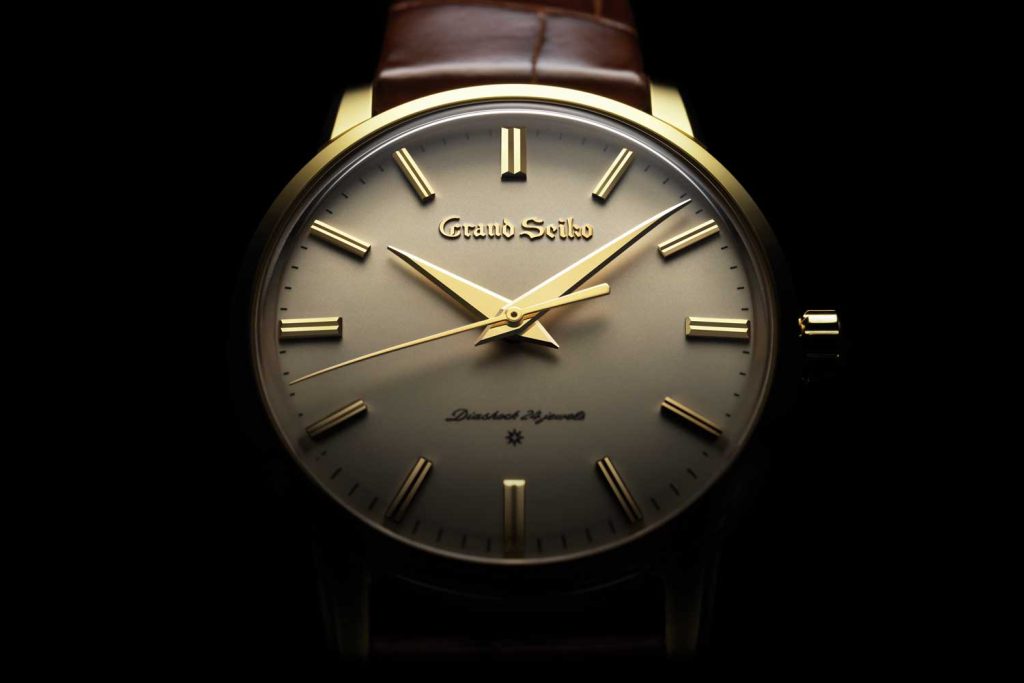
All Surfaces and angles from the case, dial, hands and indices had to be flat and geometrically perfect to best reflect light.
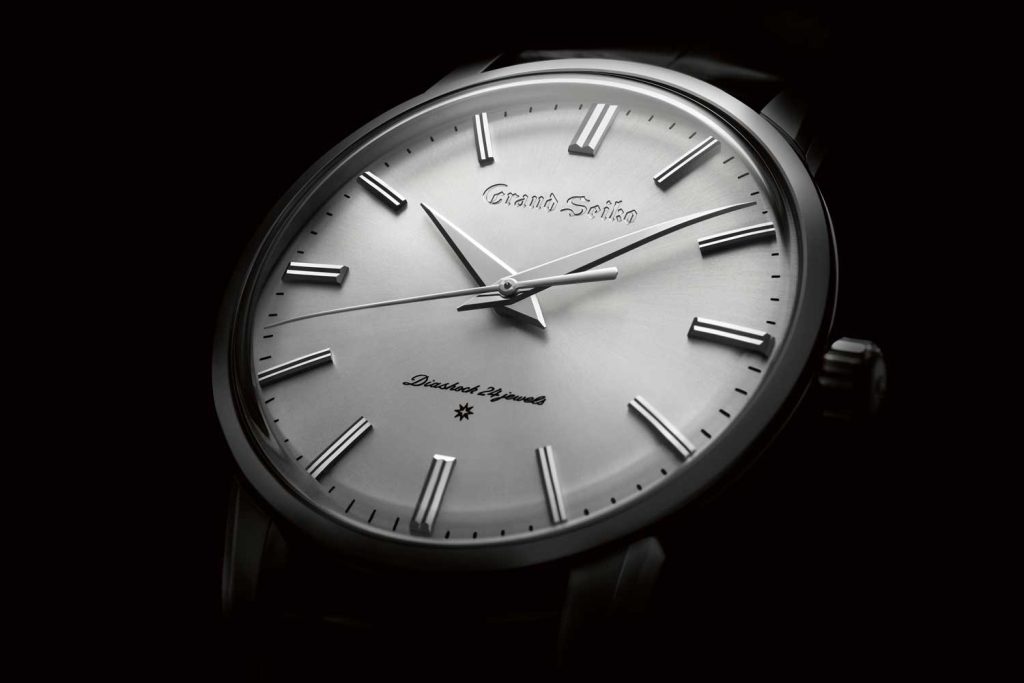
Bezels were to be simple two-dimensional faceted curves.
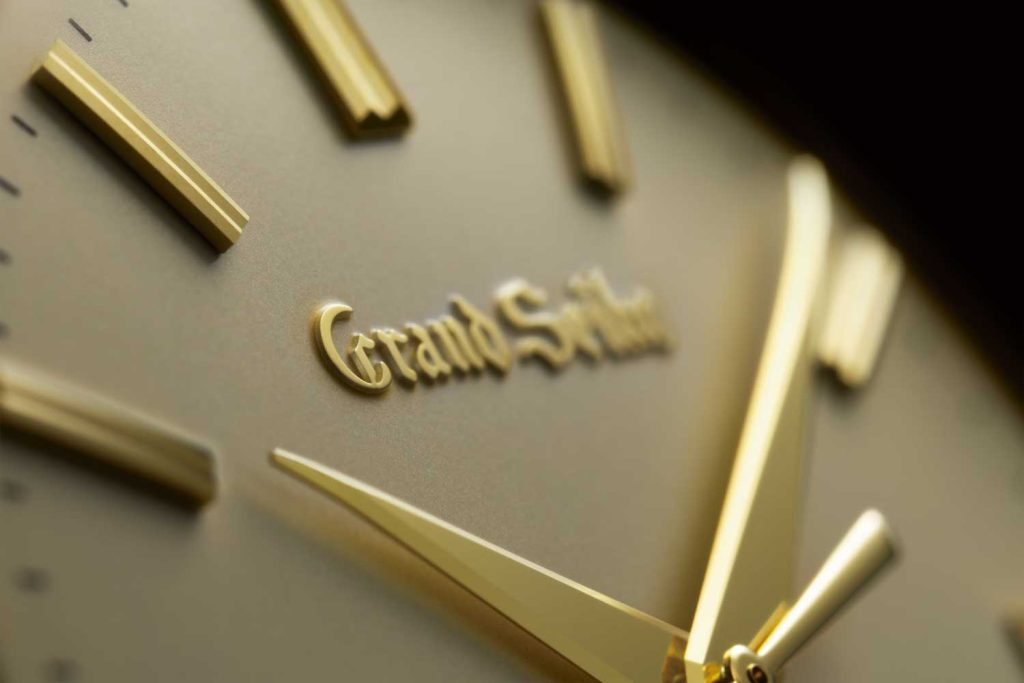
No visual distortion was to be tolerated from any angle and all cases should be mirror finished.
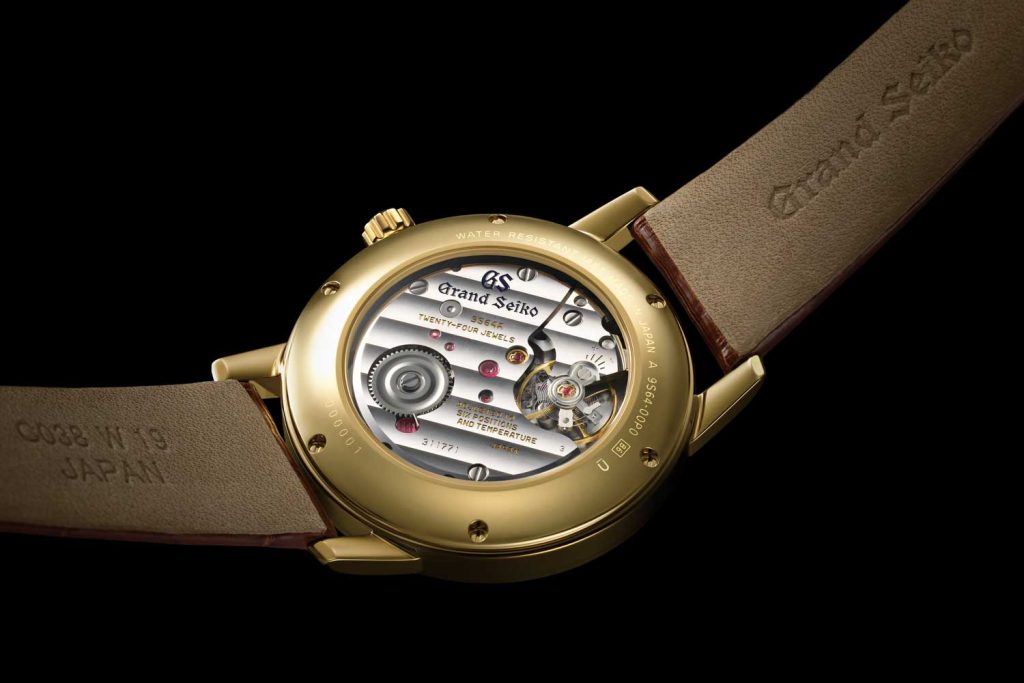
All cases must be unique for each reference with no generic round case designs.
The rules reflected the style of watch design popular in the era, and to this day, still guides the industry at large. The global perception of luxury and precious products overall has changed very little, apart from a selection of rare and unusual products that break this mould. However, the very first Grand Seiko released in 1960, with a stated chronometer precision of -3/+12 seconds a day held on to classic Seiko looks — rounded, angled lugs on a round case with a thin bezel; dauphine hands and faceted hour markers, brushed or softly polished surfaces.
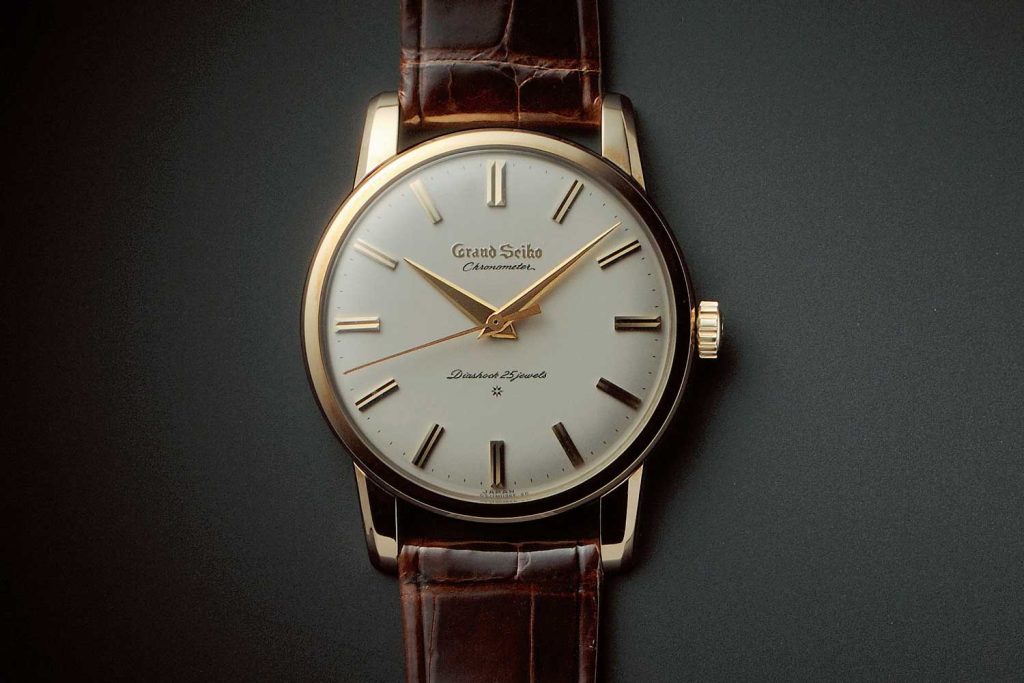
Grand Seiko 1960
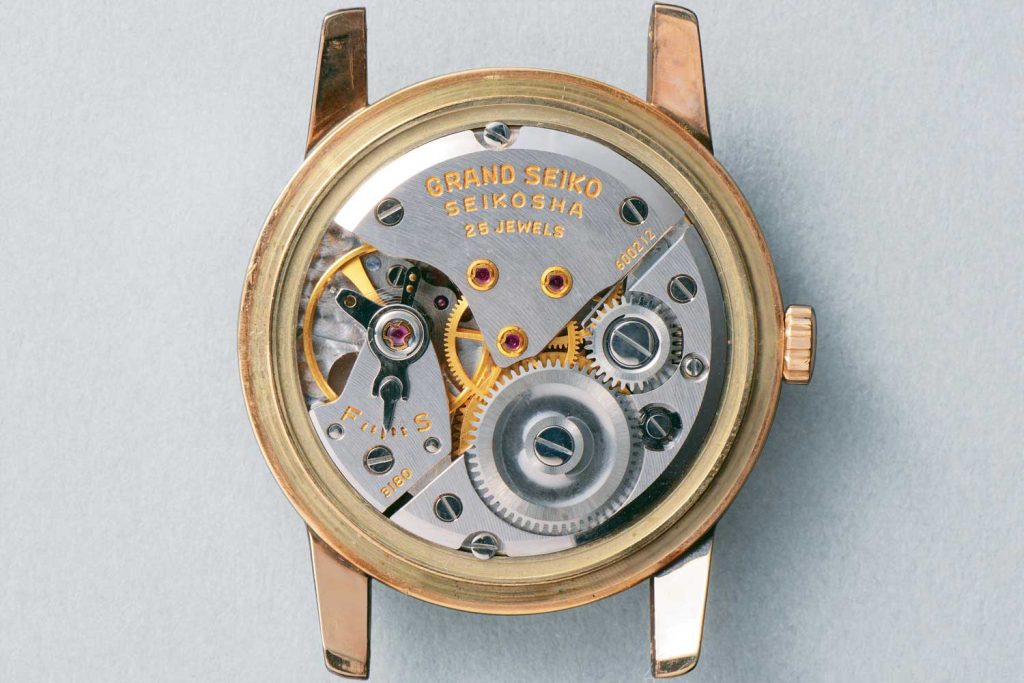
Grand Seiko 1960
The said reference, the 3180, bore a calibre of the same number, with 25 jewels and a reserve of 45 hours. The words ‘Grand Seiko’, in a stylised coat-of-arms font, were applied on the dial, a marked difference from later models which bore the ‘GS’ abbreviation. The case back bore the symbol of a lion, Seiko’s emblematic creature and the case was in gold. A few models were later produced in full platinum.
Grand Seiko at 60
Grand Seiko’s rise in the industry since has been nothing short of meteoric. Both in terms of performance as well as design and stylistics, the brand’s original cult following has gone mainstream, and today, it’s coveted both among those who love high-end watchmaking, as well as those who appreciate the Japanese style of aesthetics and design, a functional and utilitarian mode of watchmaking. Indeed, across Seiko’s other lines (Presage, Prospex, Credor, Astron and Seiko 5 Sport), the same rules apply.
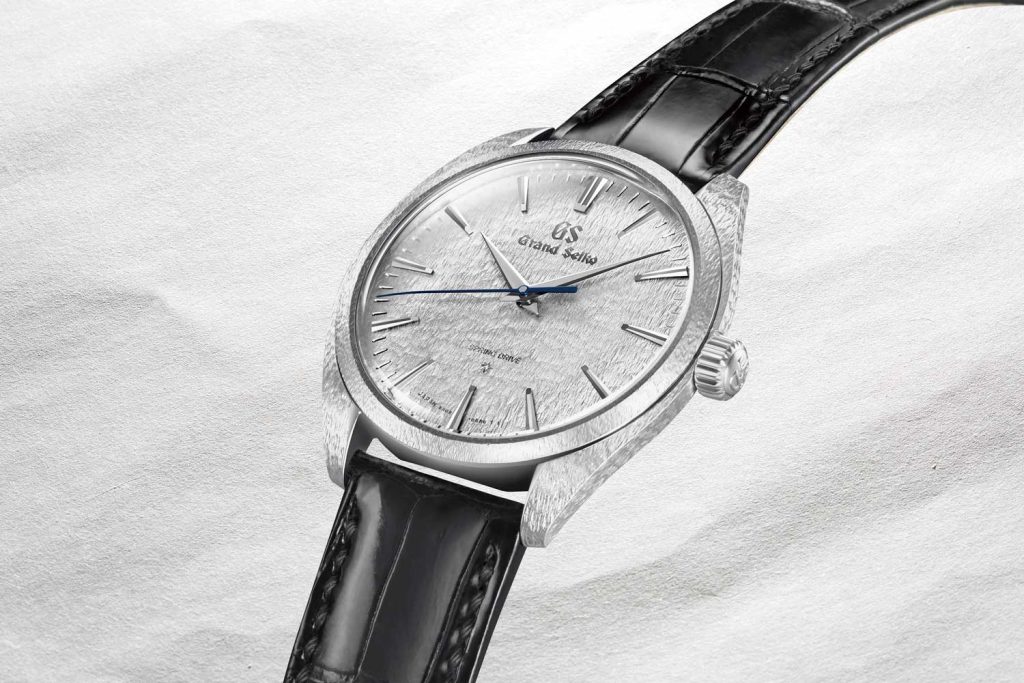
SBGZ001
It’s a trend that Grand Seiko itself has noticed and played up. Last year, the brand released the SBGZ001, with a snowflake-pattern dial and case in platinum that’s handworked by artisans of the Micro Artist Studio in Shiojiri. The matte, irregular pattern gave the watch a startlingly distinct look that was incredibly sexy and sophisticated, demonstrated by how quickly the watch sold out even at a rather steep price of USD70,000.
This year marks Grand Seiko’s 60th anniversary, and in the first quarter of the year, the company’s released a bevy of new models that are targeted at both new and old, classic and sporty watch buyers. The stars of this year’s 60th anniversary celebrations are the Elegance SBGW257, 258 and 259 references, a trio of Grand Seikos that are loyal to the reference 3180 in looks. Angled polished surfaces play against the mirror-finished case and bezel surfaces, as well as around the case back, which is visible now through a sapphire crystal and through which one can admire the 9S64 manually-wound calibre.
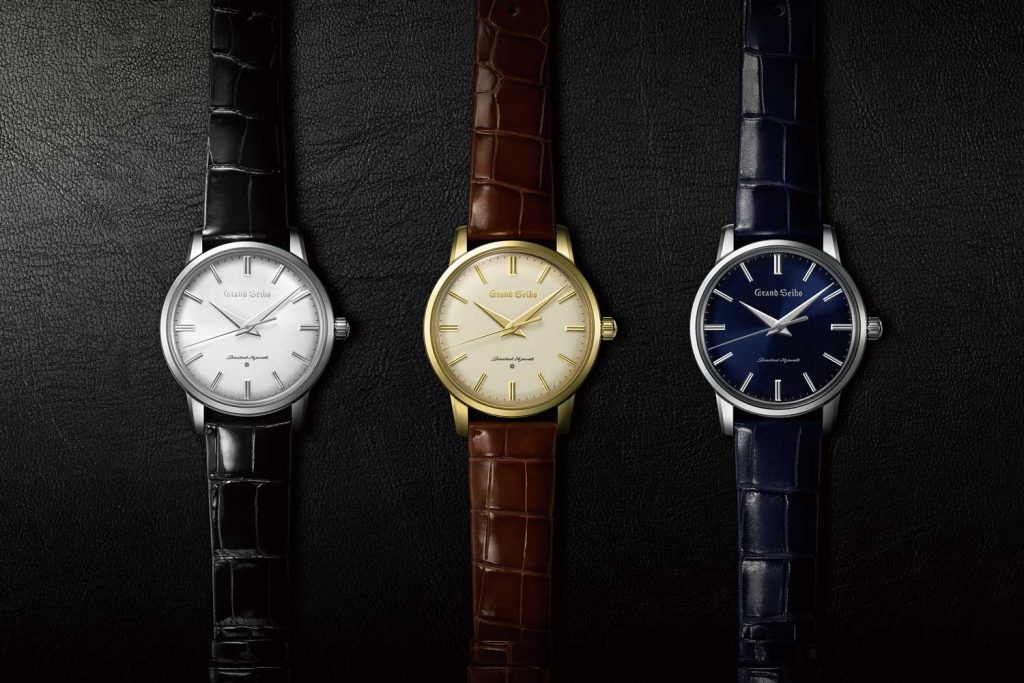
SBGW 257,258 and 259
The movement, first introduced in 2011, featured a Spron alloy (a material developed by Seiko for its hairspring, the 610, and mainspring, the 510) which is less likely to deform and has greater tensile performance, so it can deliver better isochronism and store more energy for release in the movement. The escape wheel and pallet fork are also manufactured by MEMS, and features a design that allows them to hold lubricating oil better. The movement delivers a three-day power reserve in the slim watch, which is sized at a more era-appropriate 38mm compared with the 3180’s 35mm.
Three models of the watch have been produced, the first in platinum with a sunray brushed dial with gold faceted markers and dauphine hands, as well as a yellow gold model that’s with a white dial. The final model is in Brilliant Hard Titanium, a material that’s exclusive to Grand Seiko. The enhanced material has twice the hardness of steel with the weight of titanium, and is also more lustrous than regular grade titanium material, which makes the watch’s Zaratsu polished surface appear even more brilliant than usual. The watch comes in a Grand Seiko blue dial.
The Modern GS Convert
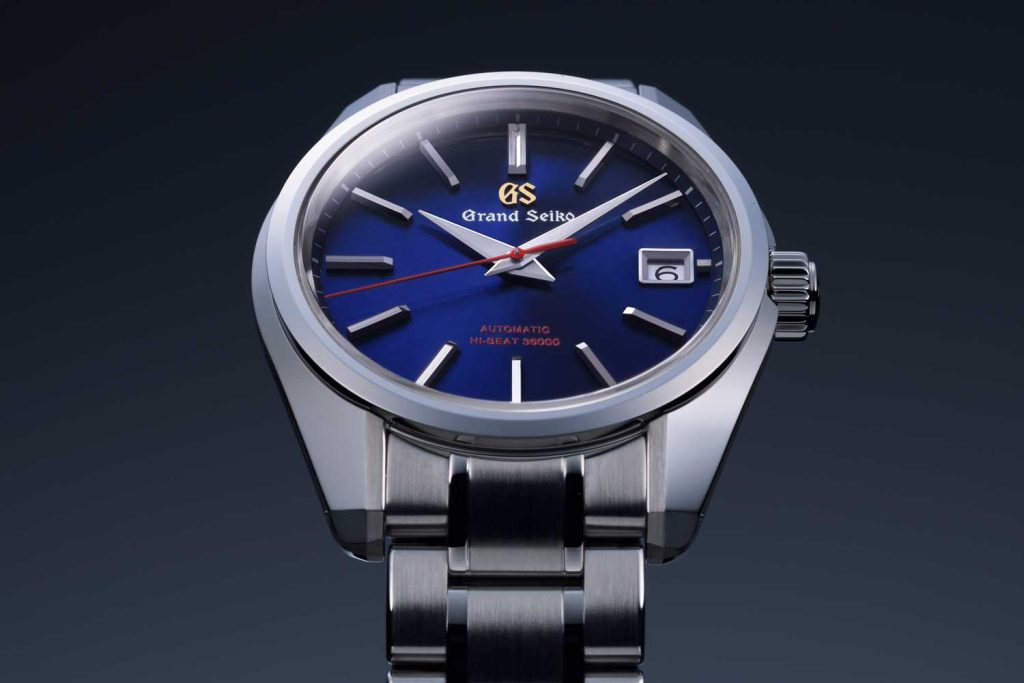
SBGH281
For those who prefer a more commercially popular Grand Seiko look, four new models in contemporary styling and the Grand Seiko’s iconic blue have been released. Two of the models bear the mechanical movement, one for each gender. For the gents, the Heritage Collection Hi-Beat 36000 Limited Edition abide by Mr Tanaka’s Grammar of Design, updated by current designer Nobuhiro Kosugi, with Zaratsu polished surfaces on angled curved lugs with a similarly worked bracelet. This model references the 44GS that’s emblematic of Grand Seiko watch designs since, with a high-beat 9S85 calibre offering a 55-hour power reserve and a precision of -3/+5 seconds. On the dial, the ‘GS’ logo is in gold, with a red seconds hand and details to commemorate this as a 60th anniversary model.
The women’s model is styled in a round case, inspired to some extent by the original 19GS model made for ladies with a row of diamonds on the bezel along with diamond hour markers. The dial is in blue mother-of-pearl and the watch is powered by a 9S27 calibre developed for Grand Seiko’s women’s models. The watch is limited to 300 pieces worldwide, and the men’s Heritage model to 1,500 pieces across the globe.
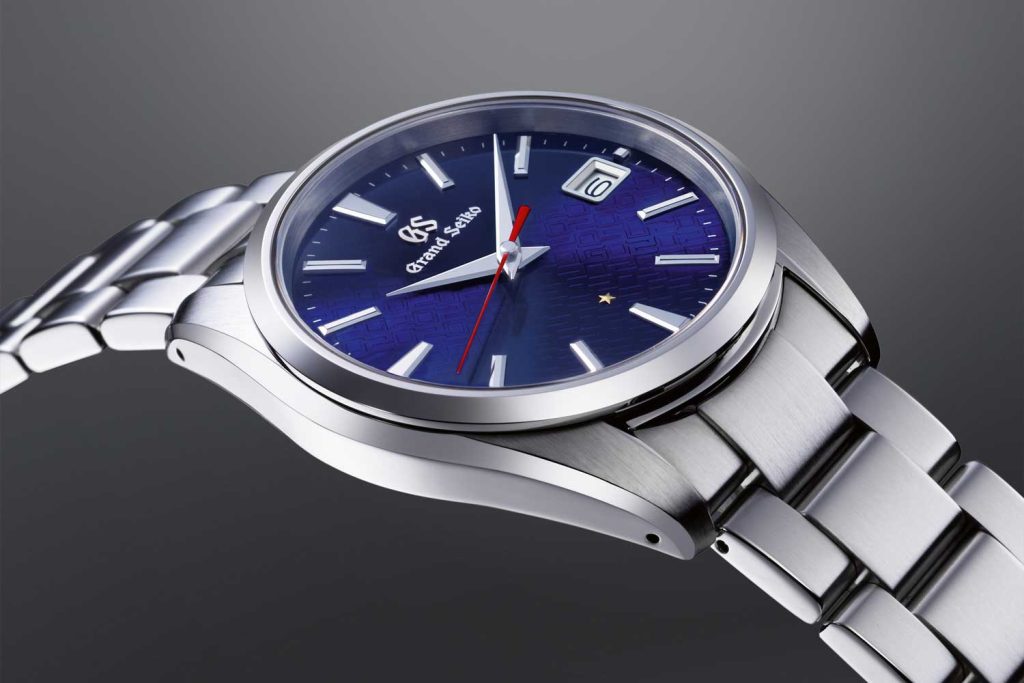
SBGP007
Two quartz models have also been created in the Heritage and Sport lines, featuring a new Grand Seiko calibre, the 9F85. The new movement sports a quick-hour adjustment, controlled via the crown, to allow for easy time zone changes on the watch. The Heritage model is styled in classic Grand Seiko looks with a gold plate featuring the Seiko lion emblazoned on the back. The Sport edition features a ceramic blue bezel and both are sized at 40mm, paired with a three-link steel bracelet.
We’re sure that we’ll be seeing more Grand Seiko models released throughout the year (a 56GS from 1970, perhaps?). Whatever the case, this is a year to celebrate the best of Japanese watchmaking





















